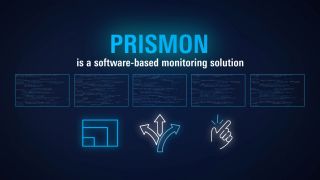PRISMON, the intelligent multiviewer for broadcasting and streaming services
In the fast-paced world of broadcasting and media, broadcasters and media professionals need to navigate the complex requirements of multiviewing and monitoring various signal types efficiently. Managing the ever-growing list of standards and formats for media content transport and encoding can be daunting.
Designed to fit within your workflows and help your business meet these challenges, R&S®PRISMON is a flexible and easy-to-use audio and video monitoring solution. It is a software-based multiviewer running on the commercial off-the-shelf hardware of your choice. It supports all common IP formats as well as SDI and also delivers a low latency multiviewer image, along with sophisticated monitoring capabilities.










